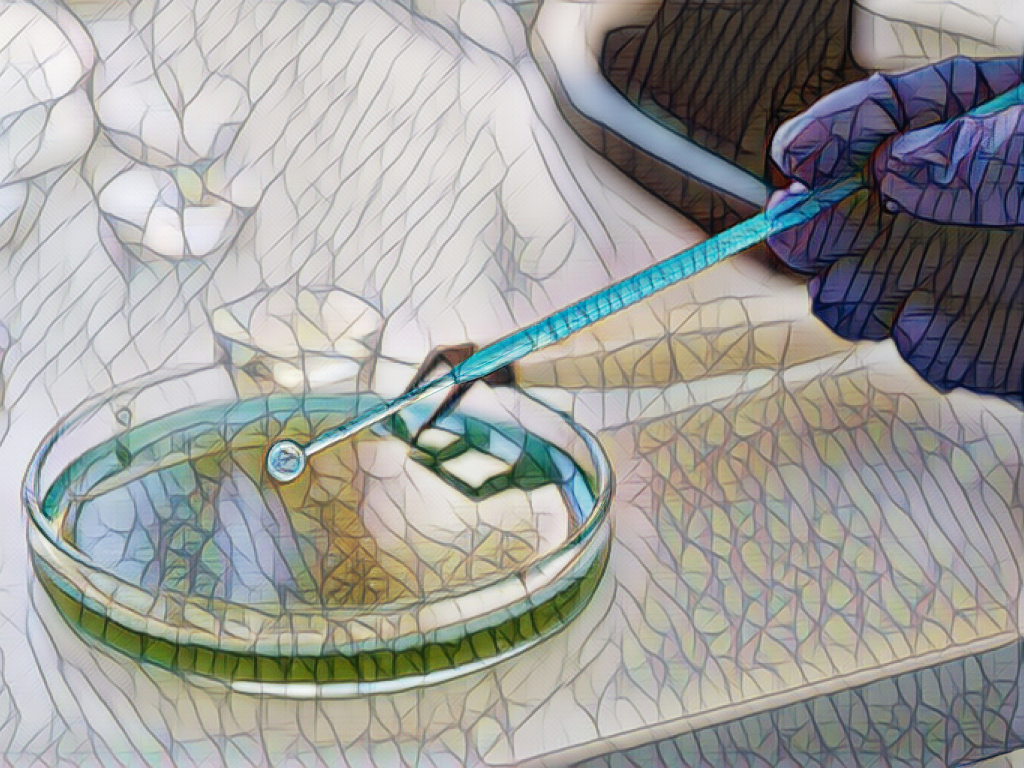Natural products – small organic molecules made by living things like bacteria, fungi, and plants – are at the forefront of medical innovation. The majority of clinically used antibiotics and drugs are derived from these unique molecules, and innovations in their development, identification, and synthesis are driving the fight against antibiotic-resistant pathogens.
In the race to develop new pharmaceuticals, an increasing number of biochemists are looking to discover new natural products – and uncover the mechanisms that produce and influence them. And Georgia Tech School of Chemistry and Biochemistry Assistant Professor Vinayak Agarwal is helping lead that charge. “I’m interested in how and why natural products are created in nature, what we can learn from their processes, and how we can harness nature's capabilities for interesting applications,” Agarwal says.
Now a $700,000 NSF CAREER grant will help him do so. The National Science Foundation Faculty Early Career Development Award is a five-year funding mechanism designed to help promising researchers establish a personal foundation for a lifetime of leadership in their field. Known as CAREER awards, the grants are NSF’s most prestigious funding for untenured assistant professors.
Agarwal’s award specifically focuses on his research into peptides, short strings of amino acids that make up proteins. “We’re making new types of peptides and modified peptides,” Agarwal explains. “Modifications in a lot of antibiotics that we use are actually peptides.” Over 100 peptide-based drugs are currently available in the US, where they’re used to treat conditions ranging from type-2 diabetes to MS.
Changing the tides with peptides
While peptides are naturally made in the body, they can also be synthesized in the lab, where they’re modified using different enzymes. By harnessing these enzymes, peptides can be better tailored to suit needs – they can be changed to interact with biologies in different ways, an essential aspect of creating new medicines.
Discovering and studying the enzymes that modify peptides is a key part of Agarwal’s research, as is understanding the mechanisms that these enzymes use to recognize and bind to the peptides. This is called “enzymatic modification,” and it’s a lush playing field for discovering new chemical reactions. “We want to solve the need of the chemistry community when it comes to peptide modifications, providing new reactions to the community regarding peptide development and peptide modification,” Agarwal says.
While gene mining has revealed some enzymes that might be useful in modifying peptides, the reactions caused by these enzymes and the resulting structure of the peptide are not fully understood: in-situ research is needed. Agarwal’s first goal is to discover new chemical reactions between peptides and enzymes by leveraging in vivo synthetic biology (inside living organisms) and in vitro biochemistry experiments (outside of living organisms).
Agarwal also hopes to better understand how peptides and proteins interact, and why so many chemical reactions depend on them. “Peptide-protein interactions and modification of peptides is a central tenet of all biological processes,” Agarwal explains. “We want to know how and why peptides are chosen by nature as scaffolding for chemical reactions.”
Hands-on research and the student connection
Leveraging in vivo synthetic biology and in vitro biochemistry experiments means a lot of hands-on research. “The team is making peptides in the lab using an E. coli bacteria,” Agarwal explains. “We provide genes to an E. coli bacteria, and it modifies the chemistries using specific enzymes.”
What does this research look like? Petri dishes. A lot of petri dishes. And a lot of opportunities for students. “One of our key goals is to use our interdisciplinary training to engage underserved students in research and lab experience. We want to educate, train, and diversify the next generation of scientists,” Agarwal says. “We are designing new courses in the laboratory which introduces undergraduates to new coursework and experiments in peptide science.”
Some of these opportunities are already bearing fruit: Agarwal recently collaborated with a team of undergraduates over a semester-long lab course, which included conducting laboratory research and publishing their findings.
Now, Agarwal plans to use this new CAREER grant to further expand opportunities for undergraduates, and will develop original curriculum starting with peptide-based lab research together with scientific communication and writing.
“The training that students are going to get provides a broad experience in biological and chemical science,” Agarwal says. “We want our students to learn mechanisms for peptide modifications, but the training is broadly applicable. It will prepare them to move forward in STEM – and especially graduate studies – but will also prepare them for industry careers, government and regulatory science, graduate studies, and more. This kind of background is applicable in all fields.”
All in all, Agarwal expects the research to span across this decade and into the next. There’s excitement in that timeline, too – ten-plus years of teaching, discovery, and opportunities for students, at Georgia Tech and beyond.
“For me, the biggest thing is student progress, as well as curriculum development and training,” Agarwal says. “That’s my driving force.”
For More Information Contact
Written by Selena Langner




